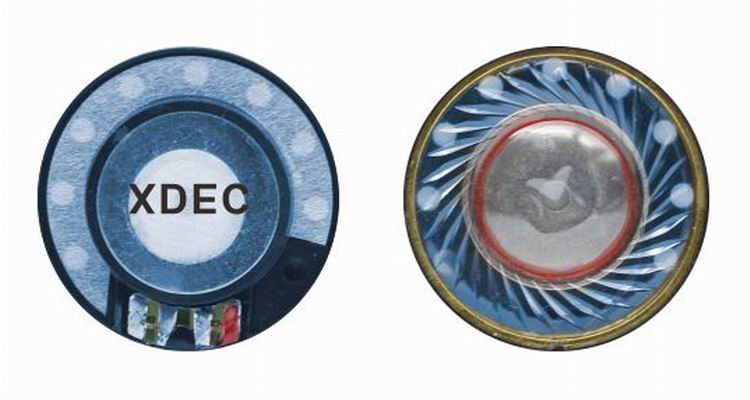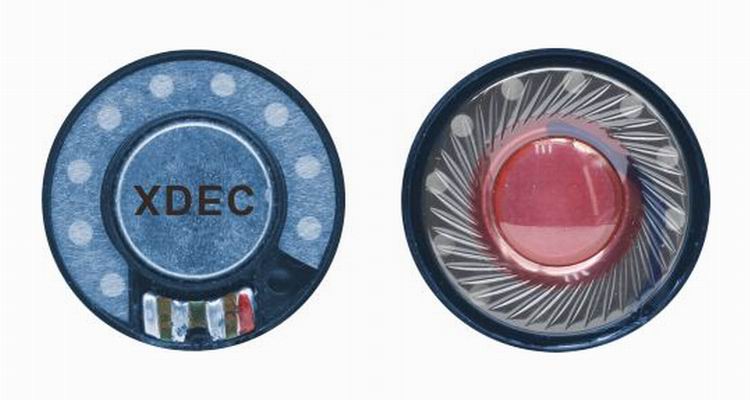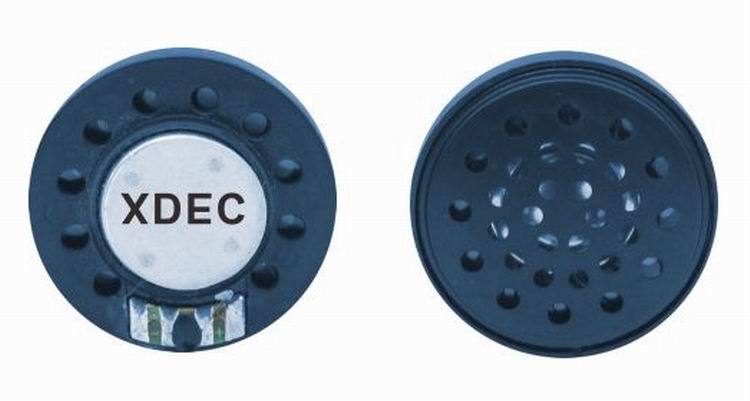The photoelectric displacement sensor measures the displacement or geometric size of the object according to how much the measured object blocks the luminous flux. The feature is non-contact measurement and continuous measurement. The photoelectric displacement sensor is often used to continuously measure the diameter of the wire or as an edge position sensor in the strip edge position control system.
Displacement sensors are also called linear sensors, which are divided into inductive displacement sensors, capacitive displacement sensors, photoelectric displacement sensors, ultrasonic displacement sensors, and Hall displacement sensors.
The inductive displacement sensor is a linear device belonging to metal induction. After the power is turned on, an alternating magnetic field will be generated on the induction surface of the switch. When a metal object approaches this induction surface, eddy currents are generated in the metal and the oscillator is absorbed The energy of the oscillator linearly attenuates the output amplitude of the oscillator, and then completes the purpose of contactless detection of objects according to the change in attenuation.
The inductive displacement sensor has no sliding contact, is not affected by non-metallic factors such as dust during operation, and has low power consumption and long life. It can be used in various harsh conditions. The displacement sensor is mainly used in the intelligent control of the analog quantity of the automatic equipment production line.
Displacement is the quantity related to the movement of the position of the object during the movement. The range of displacement measurement methods is quite extensive. Small displacements are usually detected with strain sensors, inductive sensors, differential transformer sensors, eddy current sensors, and Hall sensors. Large displacement sensors are often measured using inductive synchronizers, gratings, capacitive grids, and magnetic grids. Among them, the grating sensor has the advantages of easy digitization, high precision (the highest resolution can reach the nanometer level), strong anti-interference ability, no artificial reading error, easy installation, reliable use, etc., in machine tool processing, testing instruments and other industries Get more and more widely used.
Displacement sensors are classified according to movement methods:
Linear displacement sensor function
The purpose is to convert the linear mechanical displacement into an electrical signal. In order to achieve this effect, the variable resistance slide rail is usually located at the fixed part of the sensor, and different resistance values ​​are measured by the displacement of the slide plate on the slide rail. The sensor slide is connected to a steady-state DC voltage, allowing a small current of microamperes to flow. The voltage between the slider and the start end is proportional to the length of the slider movement. Using the sensor as a voltage divider can minimize the requirement on the accuracy of the total resistance of the slide rail, because the change in resistance caused by temperature changes will not affect the measurement results.
LT linear displacement sensor:
⊙ Widely used in industries such as injection molding, machine tools and machining
⊙ Unlimited resolution
⊙Stroke: 50 to 900mm
⊙Independent linearity: 0.05%
⊙The displacement speed reaches: 5m / s, 10m / s optional
⊙Working temperature: -30 to + 100 ℃
⊙Various electrical connection methods
⊙Protection level: IP60 (IP65 optional)
Angle displacement sensors are classified according to material:
Metal film sensor, conductive plastic sensor, photoelectric sensor, magnetic sensor, metal glass uranium sensor, winding sensor
Potentiometer type displacement sensor converts mechanical displacement into resistance or voltage output with linear or arbitrary function relationship through potentiometer element. Both ordinary linear potentiometers and circular potentiometers can be used as linear displacement and angular displacement sensors, respectively. However, a potentiometer designed for the purpose of measuring displacement requires a certain relationship between displacement changes and resistance changes. The movable brush of the potentiometer-type displacement sensor in Fig. 1 is connected to the measured object. The displacement of the object causes the resistance of the moving end of the potentiometer to change. The amount of change in resistance reflects the magnitude of displacement, and an increase or decrease in resistance indicates the direction of displacement. The power supply voltage is usually connected to the potentiometer to convert the resistance change into a voltage output. The wire-wound potentiometer changes its resistance in steps of the turn resistance when its brush moves, and its output characteristics are also stepped. If such a displacement sensor is used as a displacement feedback element in a servo system, excessive step voltage will cause system oscillation. Therefore, the resistance value of each turn should be reduced as much as possible in the production of the potentiometer. Another major disadvantage of potentiometer-type sensors is their wear resistance. Its advantages are: simple structure, large output signal, easy to use, and low price.
The measuring principle of the Hall-type displacement sensor is to keep the excitation current of the Hall element (see the semiconductor magneto-sensitive element) unchanged and make it move in a magnetic field with a uniform gradient, then the moved displacement is proportional to the output Hall potential . The greater the magnetic field gradient, the higher the sensitivity; the more uniform the gradient change, the closer the relationship between Hall potential and displacement is closer to linear. Figure 2 shows three types of magnetic systems that generate gradient magnetic fields: a system has a narrow linear range, when the displacement Z = 0, the Hall potential is 0; b system has good linearity when Z2 mm, and Z = 0, the Hall potential = 0; c system has high sensitivity and the measurement range is less than 1 mm. In the figure, N and S denote positive and negative magnetic poles, respectively. Hall-type displacement sensors have low inertia, high frequency response, reliable operation, and long life. Therefore, they are often used to convert various non-electric quantities into displacements and then measure them.
The photoelectric displacement sensor measures the displacement or geometric size of the object according to how much the measured object blocks the luminous flux. The feature is non-contact measurement and continuous measurement. The photoelectric displacement sensor is often used to continuously measure the diameter of the wire or as an edge position sensor in the strip edge position control system.
Main characteristic parameters:
Nominal resistance: the resistance value marked on the potentiometer.
Repeat accuracy: the smaller the parameter, the better.
Resolution: The smallest displacement value that the displacement sensor can feed back. The smaller this parameter, the better. The resolution of the conductive plastic displacement sensor is infinitesimal.
Allowable error: The percentage of the difference between the nominal resistance and the actual resistance and the nominal resistance is called the resistance deviation, which represents the accuracy of the potentiometer. The allowable error generally meets the requirements as long as it is within 20%, because the general displacement sensor is used in a partial pressure mode, and the size of the specific resistance has no effect on the sensor data collection.
Linear accuracy: linearity error. The smaller this parameter, the better.
Lifetime: Conductive plastic displacement sensors are more than 2 million times.
Headphone speaker is a king of speaker unit which is used for headphone, it also called headphone driver. These speakers have high sound pressure level, fast frequency response, wide frequency response range and low distortion. Headphone Speakers are mainly used for voice headphone (e.g. customer service phone, call center headphone, military intercom headset- ) and music headphone (e.g. Bluetooth headphone, sport headphone, game headphone-).
Our main headphone speakers include:
1) From the diameter, we have speakers in 23mm ~ 57mm.
2) From the impedance, we have speakers of 32ohm/150ohm/300ohm/1000ohm.



FAQ
Q1. What is the MOQ?
XDEC: 2000pcs for one model.
Q2. What is the delivery lead time?
XDEC: 15 days for normal orders, 10 days for urgent orders.
Q3. What are the payment methods?
XDEC: T/T, PayPal, Western Union, Money Gram.
Q4. Can you offer samples for testing?
XDEC: Yes, we offer free samples.
Q5. How soon can you send samples?
XDEC: We can send samples in 3-5 days.
Intercom Headphone Speaker,Call Center Headphone Speaker,Military Headphone Speaker,Voice Headphone Speakers
Shenzhen Xuanda Electronics Co., Ltd. , https://www.xdecspeaker.com